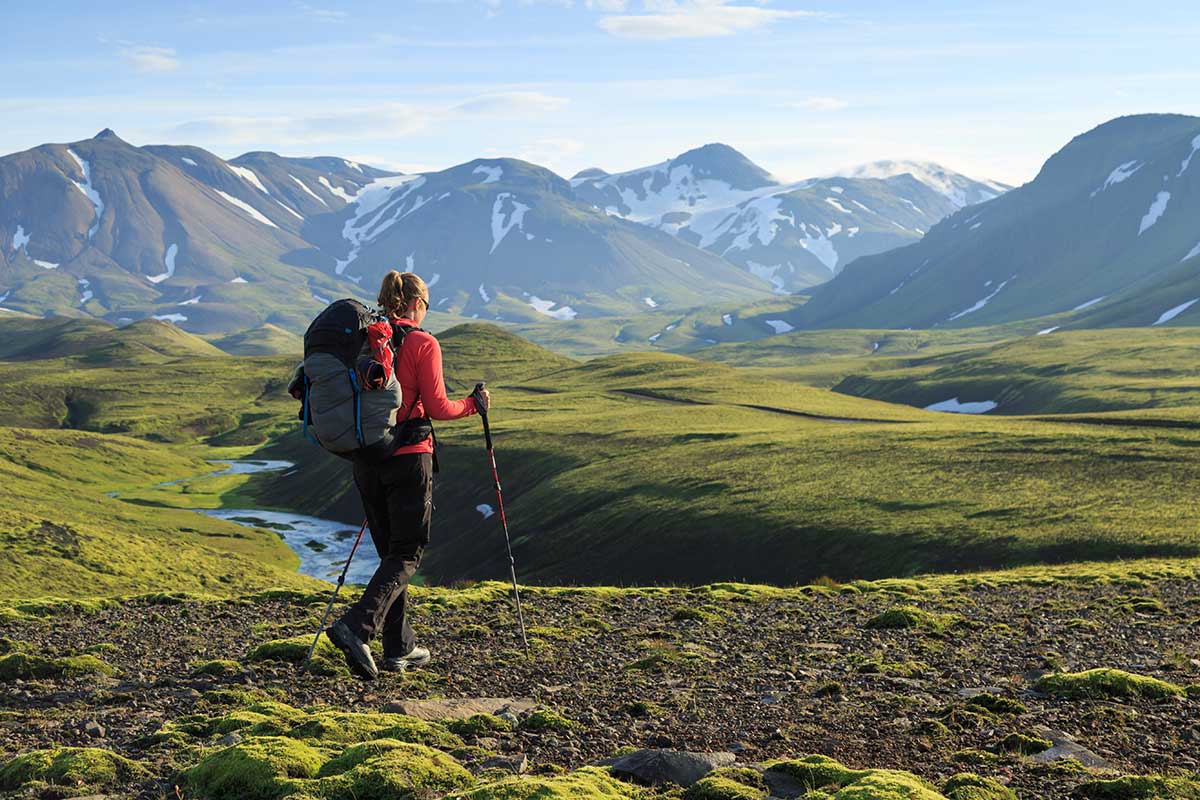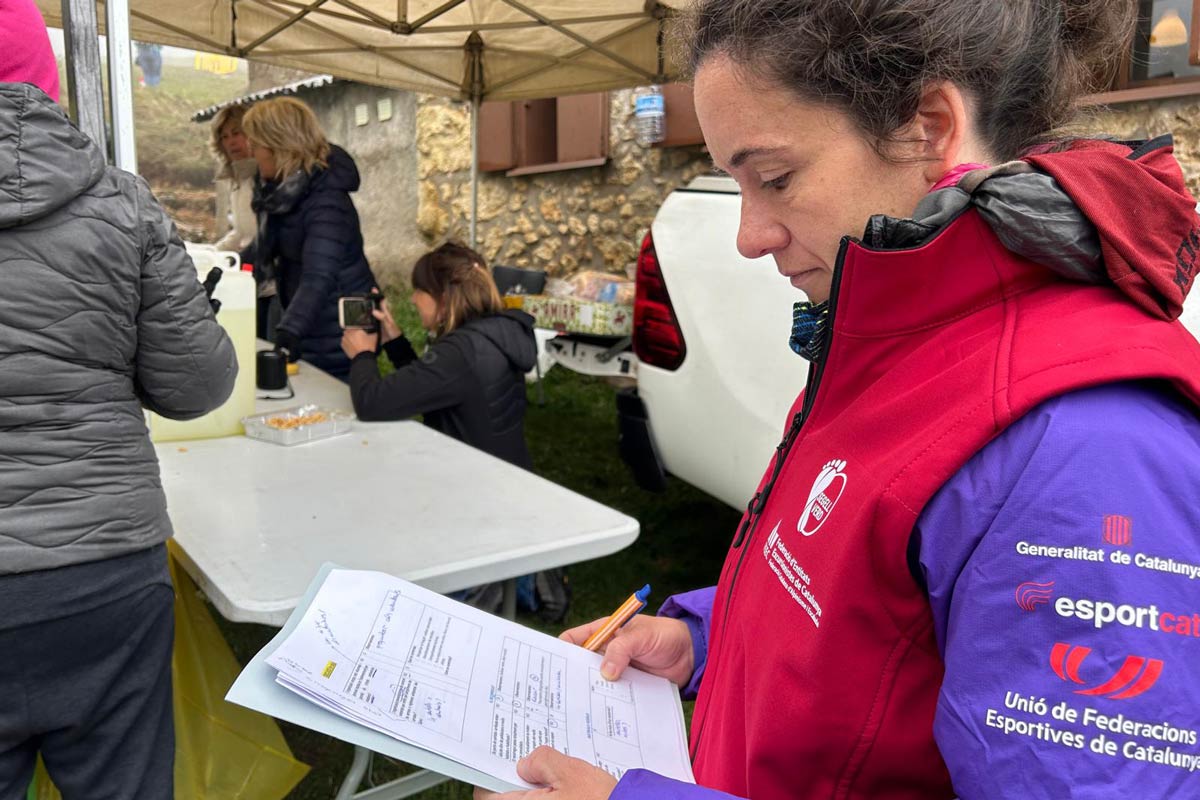The UIAA Medical Commission has produced a dedicated paper on the use of hiking sticks. It was first published in 2008 and is available in Czech, English, German, Italian, Japanese, Polish, Portuguese, Russian and Spanish.
Many hikers, mountaineers and climbers use telescopic (hiking) sticks because they may aid walking up/downhill and may also ease the strain on the spine and the lower extremity joints particularly the knees. The reductions during downhill walking with hiking poles are caused primarily by the forces applied to the hiking poles and by a change in posture to a more forward leaning position of the upper body.
Introduction
In order to have any benefits from telescopic sticks, they must be used with the correct technique.
The sticks must be height-adjustable and have handles that are constructed in a way that the user’s hands, when pressing down, firm support is provided (or gained). It is of utmost importance to use the sticks as close as possible to the body’s line of fall. It has been shown that there is no significant difference in using one or two sticks when walking without a load, but when walking with a load, balance is significantly enhanced by using two hiking sticks rather than one.
At high altitude or in cold environment the sticks should not be adjusted too long (the hands should be lower than the elbow when using the stick), because otherwise the circulation will be impaired and the user will get cold fingers in a very short time.
Advantages
- When the sticks are used with the correct technique – especially when walking downhill – the hiking stick can absorb several tonnes of weight from the lower body per walking hour. Moreover, while carrying loads the sticks reduce the forces in the lower extremity joints and make the backpacking more comfortable. This leads to a considerable spine and joint relief, especially in the following situations:
- Advanced age, excess body weight.
- When there are pre-existent joint and spinal diseases (i.e. arthritis, spondylitis).
- When carrying heavy backpacks (i.e. on expeditions).
- Balance maybe enhanced while using hiking sticks. The resulting increase in maintenance of static balance may reduce the possibility of falling and injury while standing on loose ground.
- This is of special importance when hiking on snow slopes, on wet ground, when crossing rivers and when hiking with limited visibility (fog, at night).
- In some regions (e.g. Scotland) it is useful to have a stick to test the ground as bogs exist and where it is important to know that one is walking on solid ground.
- When crossing rivers a stick increases balance and safety if used as “third leg” at the downstream side of the body.
- During load carriage on moderate grade, they reduce the perception of physical exertion.
- Use of a stick may keep the heart rate low at the beginning of the effort. This does not last for a long time due to muscular activity in the upper extremity.
- This higher cardiac workload may be used for training purposes.
Disadvantages
- Incorrect stick technique: If the distance between the body and the stick is too large, not only is the strain relief greatly reduced, but a strong turning moment can result. This can threaten the hiker’s balance.
- Decreased sense of balance: Long-term use of sticks may reduce balance and coordinative ability of the subject. This disadvantage is becoming more and more evident and can lead to certain balancing problems, especially in difficult mountain areas, where the stick-user cannot use his hiking sticks (i.e. narrow ridges or climbing terrain). In fact, the most common type of hiking accident, a fall by tripping or stumbling, can actually be made a greater risk as a result. For these reasons such accidents occur even during the use of sticks.
- Reduced physiological protection mechanisms: Strong pressure and strain stimuli are very important for the nutrition of the joint cartilage and also for training and maintaining the elasticity of the “breaking musculature”. Continuous use of hiking sticks decreases these physiologically important strain stimuli.
- Increase of the heart rate due to greater muscular activity in the upper extremity.
Correct Walking Techniques to Avoid Over-strain
In general it is easier – for motion-physiological reasons (proprio-receptor system) – for healthy hikers to learn and maintain an elastic, safe and joint-relieving walking technique without the aid of sticks, as opposed to regular stick use.
The following factors are important with regards the degree of strain put on the leg joints:
- Body weight (excess weight)
- Weight of backpack
- Correct downhill walking technique
The hiker should spread the strain evenly by using elastic and shock-absorbing steps over as long as possible. This means walking downhill with small, elastic steps at a comfortable speed without running or jumping. Paths should be used taking the bends, no short-cuts when walking downhill. Also, one should only undertake mountain tours in proportion to one’s own physical ability.
Following this advice, healthy hikers and climbers may avoid joint problems, even after decades of intensive mountaineering.
Summary
Use of adjustable sticks as a hiking aid, especially for downhill walking, is advantageous and recommended in the following situations:
- advanced age, excess body weight
- when suffering from diseases of the joints or the spine
- when carrying heavy backpacks
Hiking sticks are not necessary for other hiking situations and should not – mainly for reason of safety – be used all the time.
The advantages and disadvantages must be weighed up in each individual case.
As the sticks can become cumbersome if you need your hands free on difficult terrain, it is important to have the possibility of fixing them onto the backpack, and it is better to fix them with the tips down, to avoid striking the hiker behind in the face/eyes.
The full paper – including links to appendices and footnotes – can be downloaded here.
This is the latest extra from the UIAA’s internationally renowned high-altitude medical papers. To discover more please click here.
Already published:
#1 Nutritional considerations in mountaineering
#2 Children at Altitude
#3 Mountain activities for people with pre-existing cardiovascular conditions
#4 Avoiding the perils of Kilimanjaro
#5 What you need to know about water disinfection in the mountains
#6 Advice for Gap Year Explorers. How to Check The Quality of a Commercially Organised Trek or Expedition
#7 Dealing with Eye Problems in Expeditions
#8 A Guide on When and How to Use Portable Hyperbaric Chambers
#9 Golden Rules for Novice Climbers
#10 Advice for Women going to Altitude



